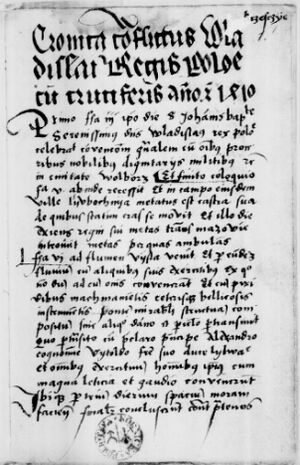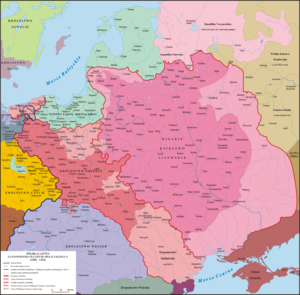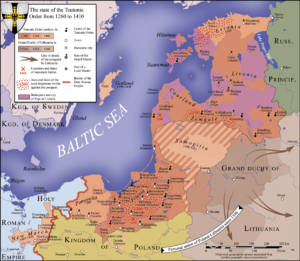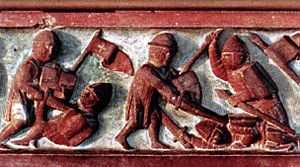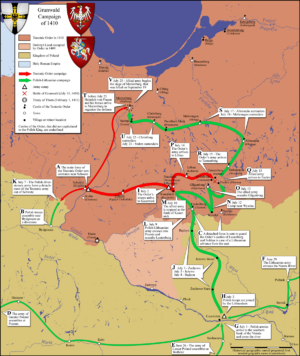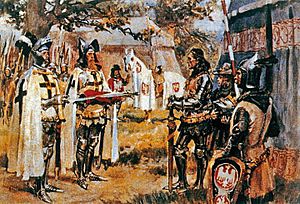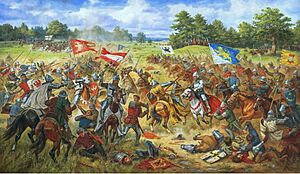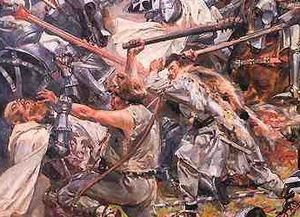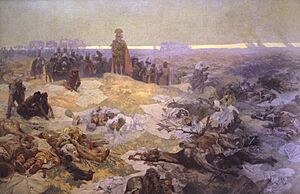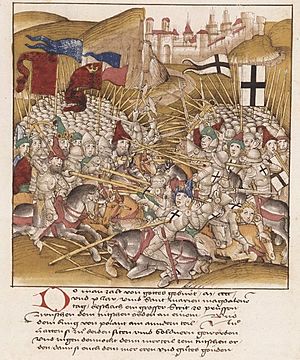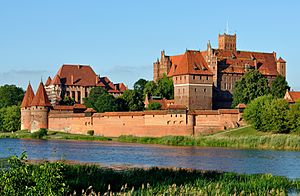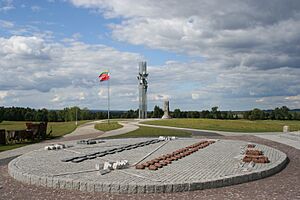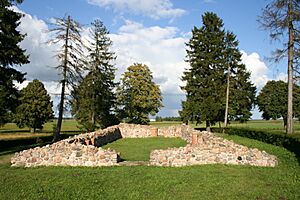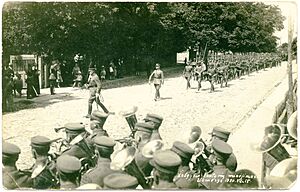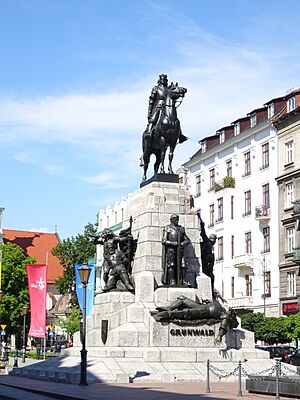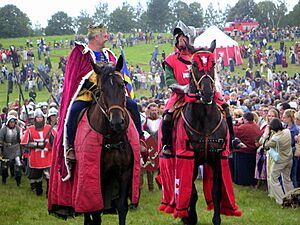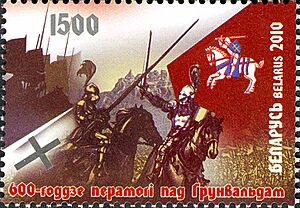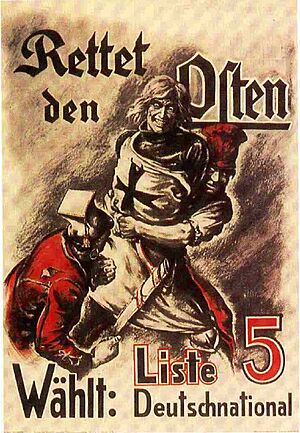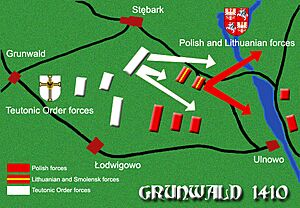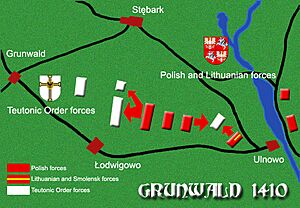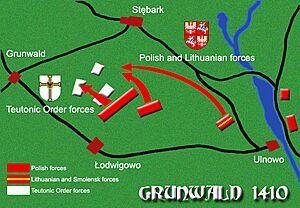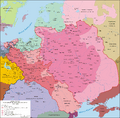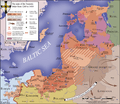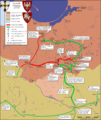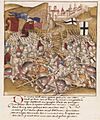Battle of Grunwald facts for kids
Quick facts for kids Battle of Grunwald |
|||||||
|---|---|---|---|---|---|---|---|
| Part of the Polish–Lithuanian–Teutonic War | |||||||
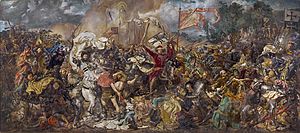 Battle of Grunwald by Jan Matejko (1878) |
|||||||
|
|||||||
| Strength | |||||||
| 16,000–39,000 men | 11,000–27,000 men | ||||||
| Casualties and losses | |||||||
| ~ 2,000 killed |
Very heavy: 8,000 Teutonic Knights killed, 14,000 taken prisoner, 203–211 out of 270 Friars died |
||||||
The Battle of Grunwald was a huge and important battle that happened on July 15, 1410. It took place in the fields near the villages of Grunwald, Stębark, and Łodwigowo, which were then part of the Teutonic Order state. The closest city was Dąbrówno.
This battle is known by different names. In Lithuania, it's called the Battle of Žalgiris. Germans called it the Battle of Tannenberg or Stebark. In Belarus, it was known as the Battle of Dubrovno.
It was a fight between two powerful groups. On one side were the combined forces of the Kingdom of Poland and the Grand Duchy of Lithuania. They were also supported by soldiers from Bohemia, Moravia, Ukraine, Tatar lands, and Russia. These forces were led by Vytautas the Great, the Grand Duke of Lithuania, and his cousin, Władysław Jagiełło, who was the King of Poland. They had about 39,000 troops.
On the other side were the Teutonic Knights, a strong religious and military order, along with some knights from Western Europe. Their leader was Grand Master Ulrich von Jungingen. They had about 27,000 troops.
Contents
What Happened During the Battle?
The battle began with a fierce attack. The Lithuanian light cavalry tried to break through the left side of the Teutonic forces but had to fall back into marshy areas.
King Jagiełło then ordered a full attack on the right side of the Teutonic army. The heavy cavalry from Poland and Lithuania finally managed to break through the enemy lines. The Polish-Lithuanian forces completely defeated the Teutonic army. Grand Master Ulrich von Jungingen died during the battle.
After the Battle: What Changed?
After their big victory, the Polish and Lithuanian armies tried to capture Malbork Castle, which was the main stronghold of the Teutonic Knights. However, they couldn't take the castle, and the siege was eventually called off.
The Peace Treaty of Toruń
A peace agreement, called the Peace of Toruń, was signed in 1411. In this treaty, Poland got back a region called Dobrzyn Land, and Lithuania got back Samogitia. Some people thought this treaty was a bit of a disappointment for Poland and Lithuania because they had hoped to completely get rid of the Teutonic Knights' state.
Long-Term Effects of Grunwald
The Battle of Grunwald had a huge impact. Before this, many believed the Teutonic Knights were unbeatable. But their defeat at Grunwald shattered this idea. The Knights also started raising taxes, which led to an uprising called the Prussian Confederation.
The Teutonic Knights never regained their former strength after this battle. Their power slowly declined over many years, leading to a series of wars that ended with the Thirteen Years' War.
Grunwald Today: A Living History
To remember this important medieval battle, thousands of people from all over Europe gather every July at the Grunwald fields. They dress up as knights and soldiers from the past and re-enact the battle. They pay great attention to making their armor, weapons, and how they fight as historically accurate as possible. It's like stepping back in time!
Images for kids
-
Lithuanians fighting with Teutonic knights (14th-century bas-relief from the Castle of Marienburg)
-
Teutonic Order presents Grunwald Swords as gift to King Władysław II Jagiełło (painting by Wojciech Kossak)
-
Banners of the Kingdom of Poland and Lwów Land during the battle
-
After the Battle of Grunwald: The Solidarity of the Northern Slavs (1924), by Alfons Mucha, The Slav Epic
-
Grunwald Monument was erected in Kraków, Poland for the battle's 500th anniversary. It was destroyed during World War II by the Germans and rebuilt in 1976.
-
A re-enactor dressed as King Władysław II Jagiełło (left) during the annual recreation of the battle in 2003
-
A German National People's Party propaganda poster from 1920 depicts a Teutonic knight threatened by a Pole and a socialist
See also
 In Spanish: Batalla de Grunwald para niños
In Spanish: Batalla de Grunwald para niños


